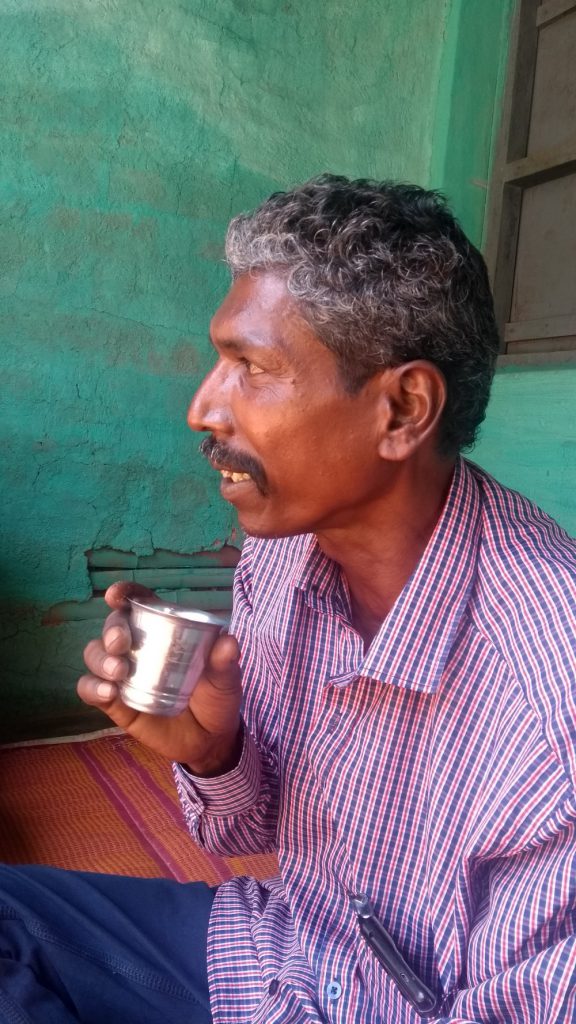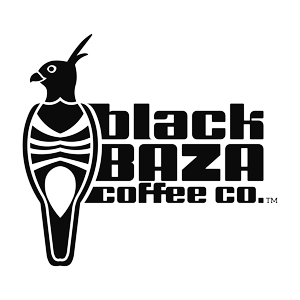Words and photographs by Arshiya Bose

I set up a light metal table under the tamarind tree. I tear rough paper up into small bite-sized squares and draw three emoji type figures. A smiley guy with big teeth, a straight-lined face and an overturned half-circle. Ten coffee producers have been invited for a cup-tasting session.
This was way back in 2014, in attendance were: the brothers from Yerakanagaddepodu, Thammadiveeregowda and Thammadibasavegowda. Kumba, Nanjegowda, K. Mahdeva, Javanna and C. Madegowda from Bangalepodu and surrounds. Jadeswamy from the one of the highest podus in the sanctuary (while natural vegetation has been cleared to grow coffee in his podu, the surrounding hills are flourishing with shola grasslands). In contrast, Narayan Nayak might have walked 15 steps to attend our cup-tasting (his house is just opposite).
Narayan was grieving because his companion Johnny had been picked up by a leopard two weeks ago. Johnny was a pure bred Rottweiler, abandoned inside the sanctuary. Kumba points out it was a white WagonR that let him out on the main road adjoining dense forest and drove away at full speed. Narayan had had both the compassion and courage to bring him back for he was a ferocious creature. Surely Johnny would have put up a fight of some sort? Apparently not. The leopard was just too powerful having picked him up and swiftly carried him away into the vegetation.
I realised that Johnny was the only pet I had seen the Soligas keep. Feral dogs were all over the place but none had been quite as well cared for as Johnny had. Narayan had even gotten him a collar! After a vivid deconstruction of how the leopard might have snapped Johnny’s neck and lugged him through Narayan’s coffee garden, people were ready for the cup-tasting.

I had planned to cup-taste an Arabica coffee from BR Hills with a pure Robusta from Coorg for comparison and a chicory-blended coffee. The arrangement was far from meticulous. For starters the coffee had already been brewed using an Aeropress. Three flasks carried the three brews and of course there was double the quantity of milk in a fourth flask. Coffee was pressed into a steel tumbler — just one spurt of black coffee after which tumblers were filled to the brim with milk. Two teaspoons of sugar were dissolved into the ‘kutti’ tumblers without which even the suggestion of such a beverage would have been considered unacceptable. We were as far away from the long, oak-wood cup-tasting tables in specialty roasters in Berlin or Budapest as they perhaps were from the lives of Soliga coffee producers in BR Hills.

In fact, this was in fact the first time that coffee producers in the BR Hills present were tasting their own coffee. The Arabica was bitter and weak when mixed with milk. The chicory-blended coffee (also an Arabica with 20% chicory) was the same — bitter and weak when drunk with milk. The Robusta from Coorg came out as a top favourite. It was bitter but strong even with milk. The toothy smiley was abundantly used. We decided that this could be the first of many cup-tasting sessions but I suggested that they let me know when they were keen rather than me haranguing them to drink coffee. The topic hasn’t been raised every since…and we’ve bought their coffee every year thereafter.
The truth is and why hide it — most coffee growers in India do not drink coffee. This is especially true of those who grow coffee on smaller parcels of land where a daily tasting of their coffee for flavour and quality is necessary for them to gain access to a buyer.
Everyone says that tea dust is also a whole lot cheaper than coffee. Things weren’t always this way. In the 1990s, there was a dissolvable toffee like thing called ‘coffee bella’ which translates to ‘coffee jaggery’. It was easily available is most shops even in BR Hills proper although the Soligas remember that the shops would restock from Yelandur town. Dissolve this toffee in hot milk and water and you would get something close to milky and sweetened coffee — like the Robusta we tried, Nanjegowda said. Nobody was able to pinpoint when exactly it disappeared — probably when Nescafe sachets came into the market was Kumba’s hypothesis.

Many months have followed and nobody seems to want another cup-tasting, although coffee at all our meetings and farmer gatherings is mandatory. No tea. It is difficult to negotiate with me on this. Most recently Sannarangegowda had taken a few of us from Bangalore to part of the BR Hills wildlife sanctuary area that I had never been to before. Apparently many members from a podu in this region were keen to join in our on activities from the next year.
A journey that would have been an hour and a half walk through the forest (and sanctuary) took us 5 hours in a gypsy. We had to use a motorable road (non-Soligas are not permitted to walk in the forest unaccompanied by Forest Department officers). The last two hours of our journey, we were going at 10 km/h. On reaching Bedeguli, we sat down on the chariot of one of Sannarangegowda’s friends’ houses. I fished out digestive biscuits, six or eight cups of smokey tea were prepared when I said (whined),
“But why tea?!” Sannarangegowda, being used to my coffee ways said rather amusedly, “The bylaws of the coffee producers’ society say we must all grow coffee under forest trees without chemicals. It doesn’t say we should drink it!”.



Leave a Reply